The puppet master
Turning thrift store castoffs into showstoppers
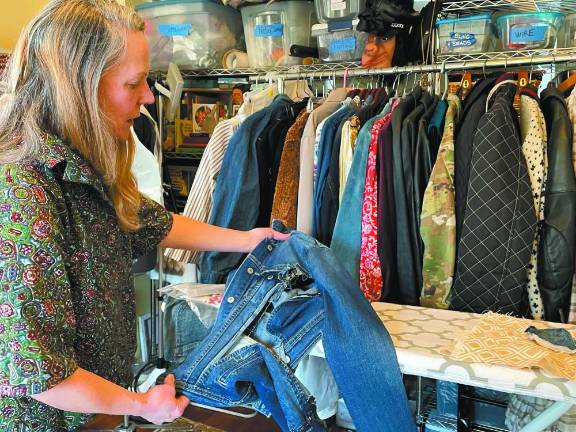
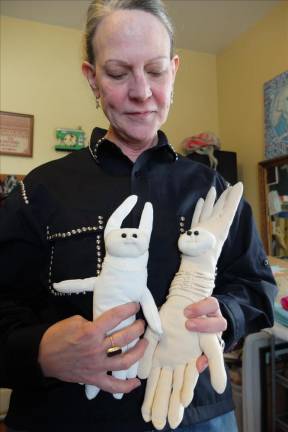
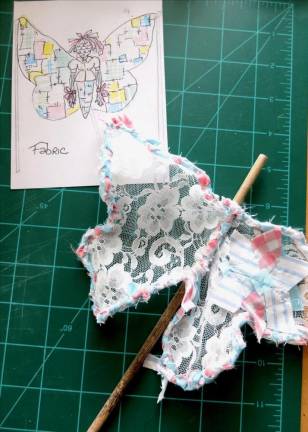
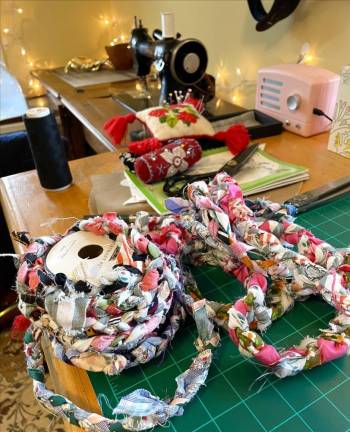
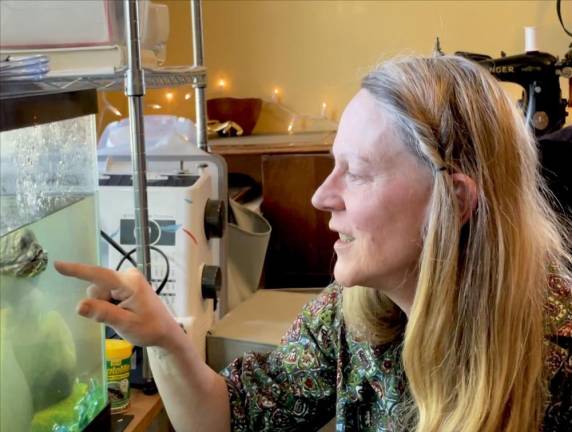
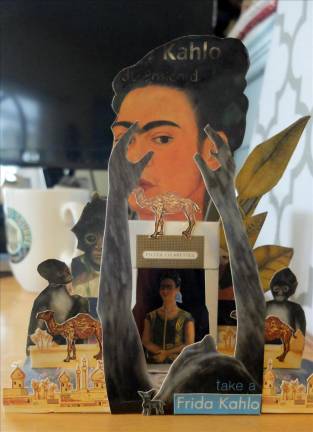
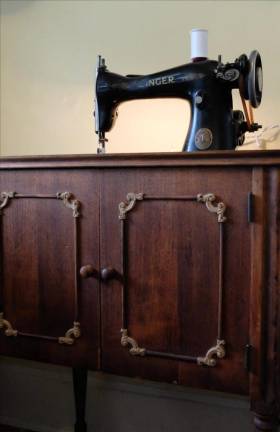
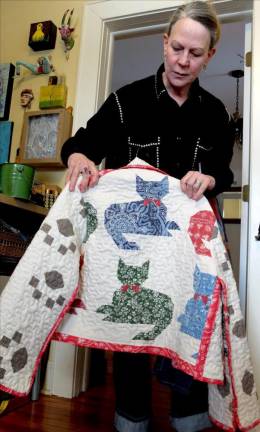
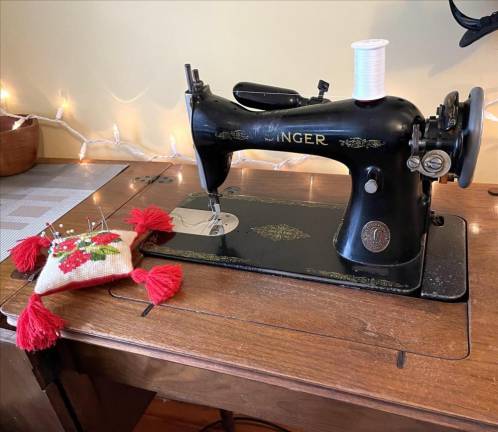
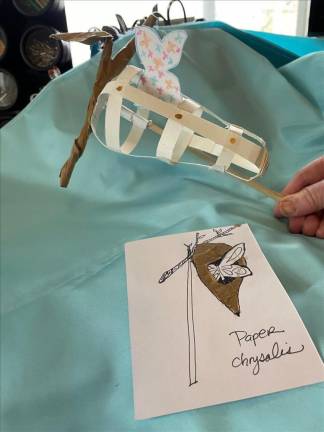
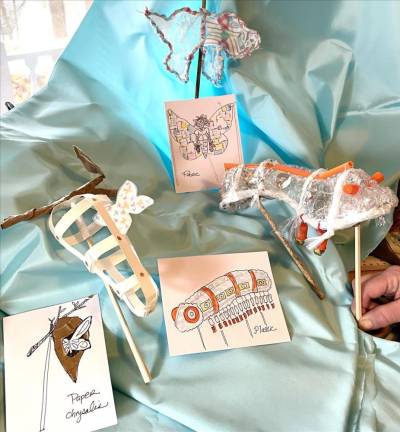

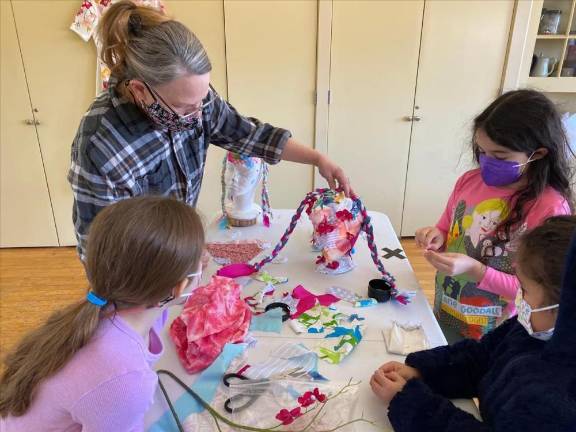
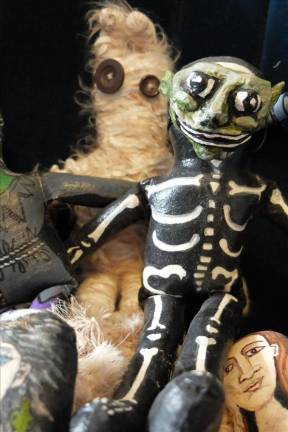
It’s the thrill of the hunt, never knowing what treasure she’ll find, that keeps Karen Decher coming back to her favorite thrift shops. She often goes thrifting with her daughter Emma, her keen eye on the lookout for that special piece of vintage fabric that will complete the sewing project she’s working on. Recently, the multidisciplinary artist has been rescuing old patchwork quilts, handmade labors of love created decades ago, just waiting for a new life.
Vintage patchwork quilts are stacked in Decher’s studio in Warwick, NY, along with everything else she needs: labeled storage boxes of craft supplies, an ironing board piled with neatly folded lengths of donated fabric, a rolling rack stocked with thrift store finds, and a 1916 Singer sewing machine in good working order. Her pet turtle Beanie, bought out of a bucket on the sidewalk in Chinatown 30 years ago when she wasn’t much bigger than a spool of thread, keeps her company.
For over 20 years, Decher has been assisting the artists behind Superior Monster Concepts, the team of puppeteers who lead the New York City Halloween parade. Right now she’s working on miniature models of a caterpillar, chrysalis and butterfly made of repurposed material. One of eight commissioned artists for the annual Earth Fest art event in Warwick, she is leading a series of puppet raising workshops at the Warwick Community Center, where she’ll teach participants how to build large-scale, lightweight versions of the models out of plastic, paper and fabric, representing three different waste streams. She picked these materials because of their overabundance in our lives, and because once they enter the waste stream, their chances of being recycled are slim.
“I enjoy the challenge of upcycling these materials into works of art, and processional art allows you to bring that awareness out into the world,” said Decher, “hopefully helping to raise people’s awareness about these waste streams.”
The workshops are put on by Wickham Works, a community arts nonprofit that uses upcycled sculpted artworks by local artists to initiate conversations about reducing consumption of disposable goods and diverting them from landfills.
Decher comes by her interest in repurposed things from her grandmother, a professional seamstress, and her mother, who made clothes for Karen and her sister when they were children. “It’s a blessing and a curse, but I grew up in an era when you didn’t throw anything out. A dress became an apron, an apron became a dishtowel, a dishtowel became a cleaning rag. It never got thrown away until it was literally falling apart,” said Decher.
She pulls out a large ball of brightly colored, braided fabric scraps – remnants of sewing projects. At night in front of the TV, she cuts the scraps into strips and braids them into rope. In the puppet raising workshops, the butterfly puppet will be made from donated fabric, an embroidered dress that she no longer wears, and embellished with trim made from this scrap fabric rope.
Growing up in Albany, Decher was drawn to the lively arts scene in New York and took classes in painting and graphic design while at nursing school in Brooklyn. In some ways, it was Karen’s father who was most instrumental in shaping her life as an artist. He gave Karen and her sister some advice when they were teens: “Have a career where you are self-sufficient.” Although she loved painting and drawing, she decided to follow her interest in science and become a nurse. “Nursing allowed me the freedom to make whatever I liked,” she said. “I was not depending on my art for my rent.”
Living in New York City, she carved out studio space wherever she was, sometimes resorting to canvas tacked to the wall of a narrow passageway. Her friends were artists too – musicians, filmmakers – and she designed album covers and built props for them.
Decher has always been drawn to the potential of found objects, turning old bedsprings rescued from the street into creatures. She made a series of dioramas using cigarette packets and cuttings from vintage magazines, displaying them at a friend’s restaurant. “They all got stolen,” Decher says, laughing. “Which to me was hilarious. I wonder where they are out in the world now.”
When Decher moved to Warwick in 2004 with her husband and baby, her puppets followed. She created the Apple Queen for a parade to honor Warwick’s sesquicentennial, helped bring processional art to the LGBTQ+ Pride parade, and designed and built sets for the haunted house at the Community Center using upcycled material and found objects.
Then she joined the Warwick Historical Society as a volunteer in their textile department. “Being around those clothes and seeing how they’re constructed really helped with my sewing skills,” she said. It also helped her see the potential in the discards from her own wardrobe. She’s partial, too, to watching period TV shows with pencil in hand, sketching the shape of a peplum or a sleeve that catches her fancy.
Decher set to work reimagining her old clothes, deconstructing jackets, unpicking seams, cutting off collars, removing panels. She replaced them with contrasting fabrics from her stash of thrift store finds, making new and stylish mashups: a jean jacket with lapels from a pinstripe suit, a bomber jacket with ribbon rosette sleeves from a 1980s dress, a leather jacket with denim panels. She took a small patchwork quilt of cats, and removing the batting, carefully pieced it together again like a puzzle, using every scrap of fabric to make a jacket for Emma, a cat-lover. Now that the world is opening back up, mother and daughter are again on the hunt at their favorite thrift stores, looking for clothes ready for reincarnation.
Check out Decher’s puppets at the Earth Fest celebration in Warwick’s Stanley Deming Park on April 30, noon to 5pm.